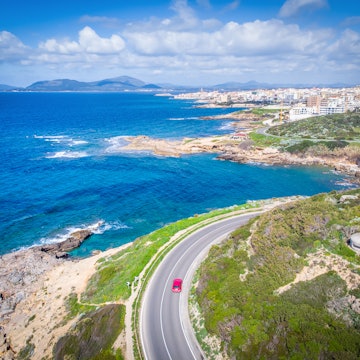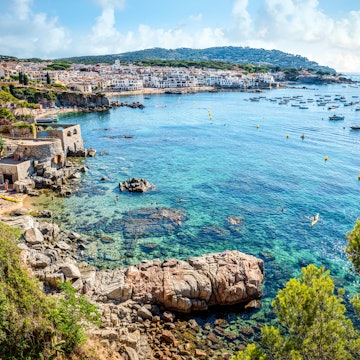
The 9 best things to do in Catalonia, beyond visiting Barcelona


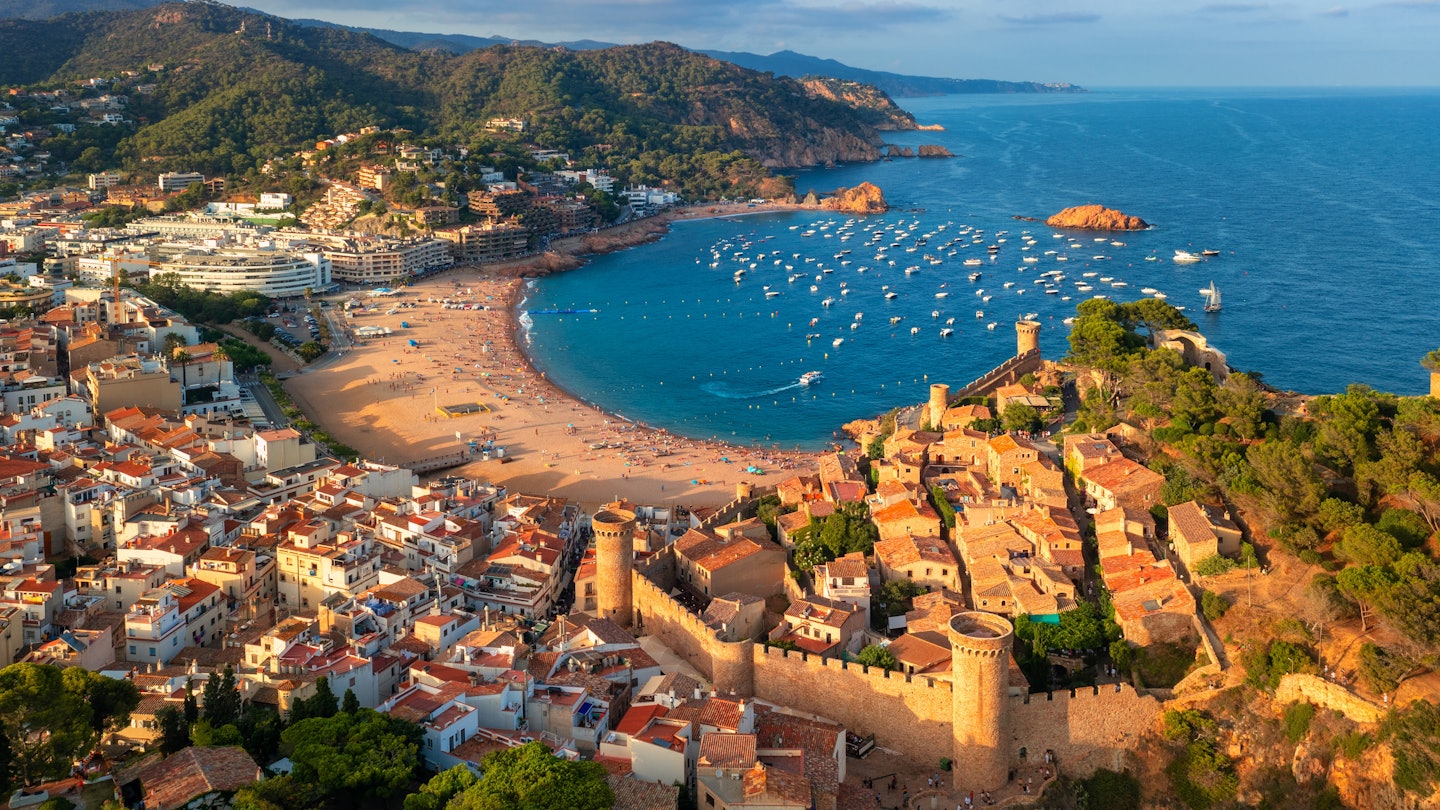
The historic fortress of Tossa de Mar on the Costa Brava. Boris Stroujko/Shutterstock
Catalonia is a region that has it all. Within a few hours of Barcelona, you can find yourself floating in the sea, climbing up high in the mountains, or exploring castles, monasteries and ancient ruins – without ever straying too far from your next glass of cava. With a distinct identity and language, Catalonia will surprise you and leave you wanting more.
The seaside is defined by two coasts: to the north are the rocky coves and small villages of the Costa Brava; to the south the sun-soaked and sandy shores of the Costa Daurada. Along the Mediterranean shoreline, historic sites as ancient as the first Greek and Roman settlements on the Iberian peninsula and as modern as the dream home of the artist Salvador Dalí await discovery. It’s a place that calls out to the adventurer’s heart, with many walking paths leading to secluded swimming holes begging to be stumbled upon.
Inland, you’ll find mountains, major cultural centers for Modernista architecture, and seasonal events that celebrate longstanding Catalan traditions. Vineyards grow and the cava bottles pop under the watch of the sacred mountain of Montserrat, the towering Pyrenees thrill with high-altitude inclines for skiers and hikers, and Catalonia’s only national park is a lake-filled marvel that will leave you spellbound.
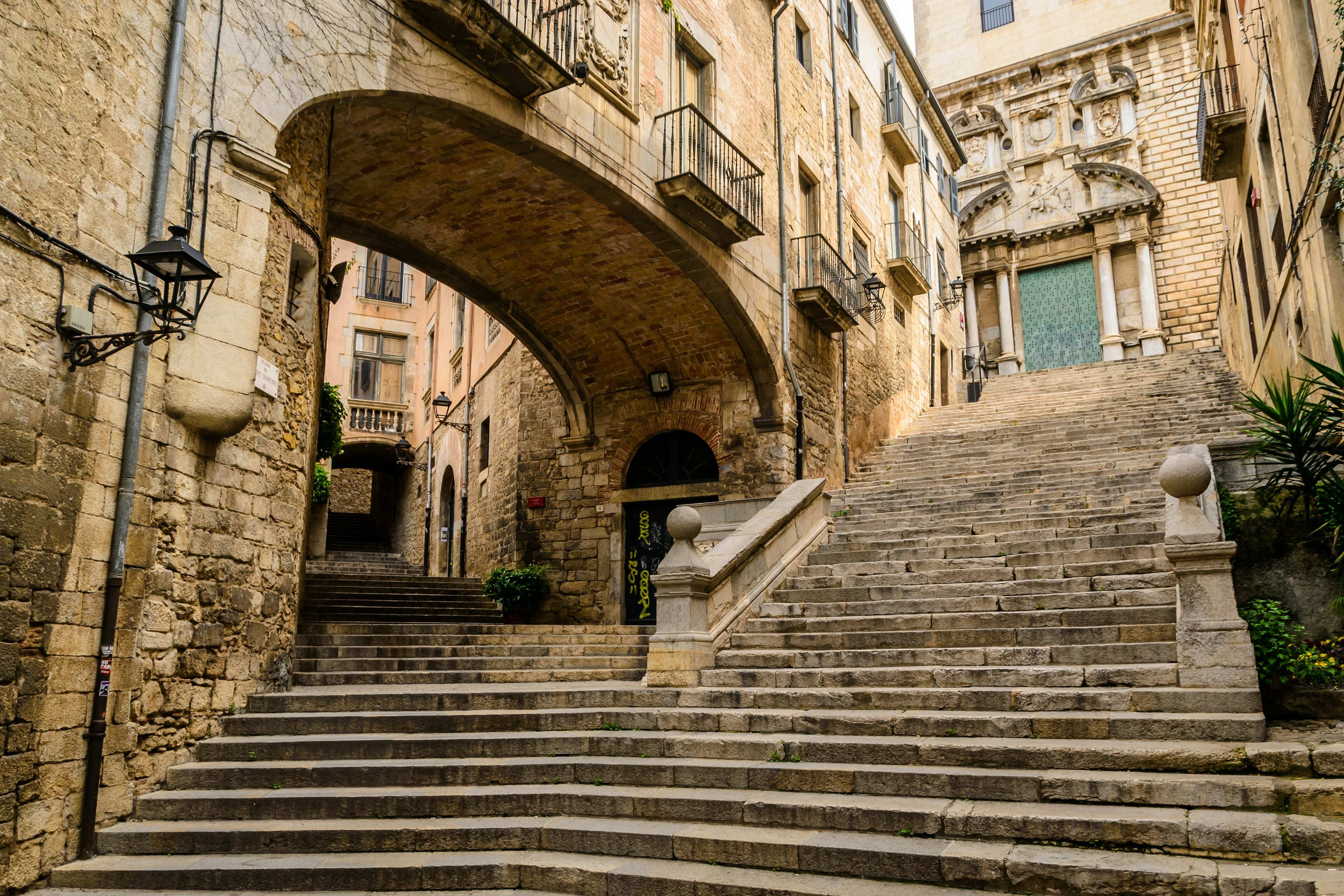
1. Wander Girona's cobbled alleys and medieval Jewish quarter
When you cross over the footbridge into old Girona, you will be swept up into the careening streets and stairways and transported back in time. The city built at the meeting of three rivers dates back to the ancient Roman Empire, but it achieved its peak greatness during the prosperous Middle Ages.
Despite the contemporary city that surrounds it, Girona’s old quarter maintains its medieval charm, and an extensive museum selection provides access to the ruins of Arab bathhouses and monastic cloisters. The medieval walls supply a prolonged vantage point that runs the whole length of the city and shares a peek of the surrounding hills, natural landscape and roadways that are immensely popular with cyclists.
In Girona, the layers of history are dense, tangible and, no matter how many loops you make around the old quarter, there’s always some new detail to catch your eye.
Girona’s Jewish history is well-preserved at the Museu d’Història dels Jueus, which documents Catalonia’s second-most important Jewish community (after the one in Barcelona) before the Inquisition and forced conversions that erased many of the traditions of Catalan Jews. The museum is located in the old Jewish Quarter, also known as El Call, and displays an 11th-century miqvê, or mikveh, for ritual bathing, as well as Hebrew-inscribed gravestones relocated to Girona from the Jewish cemetery in Barcelona’s Montjuïc.
Exhibits tell the story from arrival in the 9th century through to periods of prosperity in Middle Ages, while sharing immersive details about community traditions and family life within El Call.
Planning tip: There is an online audioguide available in several languages.

2. Explore the traditional villages and hidden beaches of the Costa Brava
If you only choose one place to visit on the sparkling Costa Brava, Cadaqués is the quintessential coastal village, with rocky beaches, whitewashed buildings and cobbled streets dominated by the pink and purple plumages of bougainvillea trees. Nestled just outside Cap de Creus Natural Park, it has long been a favorite holiday retreat for artists and celebrities, but the pride of Cadaqués is its former long-term resident Salvador Dalí.
It was near here where the artist chose to build his retirement villa, which is now a museum that brings Dalí’s legendary eccentricity to life. To discover what he found so special about this place, you only need to go for a stroll on the coastal trails or hop in a kayak and find a moment of peace in a rocky cove. Wandering through town is also a delightful way to spend your time, as shopping and gastronomic opportunities are plentiful.
Venturing south, pocket-sized coves framed by pine trees and subtropical flowers, and lapped by crystalline water make up the sublime coastline around Begur. The area is home to some of Spain's most gorgeous beaches. Their small size and difficult access means many remain largely undeveloped, making them some of the Costa Brava's quieter spots to soak up some rays.

3. Conquer high-altitude lakeside trails
Parc Nacional d’Aigüestortes i Estany de Sant Maurici (“Winding Waters and Lake Sant Maruici”), Catalonia’s only national park, offers a majestic way to experience The Pyrenees mountains that separate Spain and France. The national park is rife with well-marked trails, welcoming refugis (huts) and impressive scenery at every turn. With over 200 estanys (lakes), looked over by 3000m-high mountain peaks, the beauty of this glacier-carved realm feels downright cinematic.
It's possible to walk right across the park in one day. The full Espot–Boí (or vice versa) walk is about 30km and takes about 9½ hours, plus stops, but you can shorten this by using 4WD taxis for some of the journey.
The path climbs to the Portarró d’Espot pass (2427m), where there are spectacular views over both of the park’s main valleys. Make sure you have suitable clothing for a high-mountain trek.
The Carros de Foc – a circular 55km trek linking nine of the park’s refugis – is a top-rated hike, incorporating the best of the national park's glorious mountainscapes, at altitudes between 1885m and 2395m. It allows you to spend five to seven nights in the park, starting from whichever refugi you fancy.
There are also numerous shorter walks of 3- to 5-hours (return) that take you up into majestic side valleys from Estany de Sant Maurici or Aigüestortes.

4. Unravel in Salvador Dalí's theater of the absurd in Figueres
In Cadaqués, Salvador Dalí found his inspiration, but in Figueres his life's work comes together in a grand display at the unforgettable Teatre-Museu Dalí.
Opened in 1974 after over a decade of planning and anticipation, Dalí’s museum became a centerpiece of the artist's hometown. The larger-than-life eggs that top the building’s facade are just a hint at the many surrealist images and ideas waiting inside – and intriguing secrets, if you know where to look.
You’ll enter the museum through the courtyard with the upside-down boat that floats above Dalí’s Cadillac like a rain cloud, before finding the main theater with a significant backdrop of the painting Labyrinth.
Work your way around the museum's intentionally dizzying corridors, keeping eyes peeled for hidden attractions, such as peepholes that look into a green-lit flamingo room; and look up at the ceiling to see Dalí’s own version of the Sistine Chapel in the Palace of the Wind Room. The museum contains much of Dalí’s life’s work, as well as pieces from other Catalan artists, such as longtime friend of Dalí and museum codesigner, Antoni Pitxot.
Local tip: When your tour of the museum is done, you'll still see the artist's mustachioed visage all over the streets of Figueres. If you want to stick to the Dalí theme, head to the Hotel Duran. This once-favorite haunt of the great surrealist now pays homage to his historic patronage, with photos on the wall of the lobby and restaurant.

5. Marvel at Roman ruins in the heart of Tarragona
Occupying a central location on the Costa Daurada, Tarragona was the first city to be settled by the Romans when they arrived in the Iberian Peninsula. Formerly known as Tarraco, it spent hundreds of years as the region's capital. Remnants of the ancient city are found throughout the old town and have been well-preserved by its continuous inhabitants. However, the most remarkable sight is the amphitheater, which could host up to 14,000 spectators on its striking seaside perch.
Much care is taken to preserve and display the Roman ruins, which serve as the foundation of this vibrant, modern city. The cathedral, one of the largest in Catalonia, features a blend of Gothic and Romanesque styles, while the central market harks back to the more recent Modernista heyday. The story of Tarragona is a long one, with a few shady plazas for vermouth-sipping and many enticing corners worth exploring.
Detour: Tarragona is also a gateway to the Costa Daurada’s sparkling beaches and the feast of Modernisme architecture in nearby Reus, hometown of Spain’s most famous architect, Antoni Gaudí.

6. Party hard in the fun-filled, LGBTQ-friendly Sitges
Just a short train ride away from Barcelona, Sitges is a lively escape where you can find beautiful beaches and a glitzy nightlife scene. Listen to the bells of the Església de Sant Bartomeu i Santa Tecla ring out as you lounge and enjoy the main strip of sandy beaches, or explore a little further up the coast to test the waters at the clothing-optional Platja dels Balmins.
However, Sitges isn’t just about the beach and party scene, it also has a historic center where you can wander through the old streets and learn about one of the leading artists of modernism, Santiago Rusiñol, at the Museu del Cau Ferrat and the ornate Palau de Maricel.
Planning tip: You can catch one of the two largest celebrations of color and love during Carnival in late February/early March or June's Gay Pride Parade. In October, the International Fantastic Film Festival of Catalonia is a large draw for celebrities and cinephiles, especially fans of fantasy and horror.

7. Dine on cuina volcànica amid the enchanting landscapes of La Garrotxa
If you perceive a rumbling sensation during your travels in Olot, it might be more than your appetite lusting after the rich local cuina volcànica (volcanic cuisine). This bustling town is the regional capital of La Garrotxa, a lush landscape of cone-shaped hills chiseled by more extreme geological activity up to 700,000 years ago, is now protected as Catalonia's Parc Natural de la Zona Volcànica de la Garrotxa. The park completely surrounds Olot, making the town an excellent base for exploring.
Olot sprawls a bit, but the medieval center is agreeably walkable, with a handful of museums, grand Modernista buildings, exceptional restaurants and a lively Monday market.
Since 1994, a dedicated group of chefs in Olot has been proudly carrying on the cuina volcànica tradition, which stems from the area's exceptionally fertile volcanic soil, responsible for a bounty of locally grown produce that forms the base of this hearty cuisine. Traditional ingredients include black radishes, wild mushrooms, Santa Pau beans, Montserrat tomatoes, ratafia (liquor with aromatic herbs, sometimes flavored with walnut) and piumoc (dry pork sausage), though some of the final creations are deliciously contemporary.
Detour: After giving yourself time to enjoy the gastronomy, you can rent a bike from outfitters such as Centre Logístic de Bicicletes (which also offer luggage and bike-transfer services) and tour routes beyond the city. Some are easy grade and family-friendly.
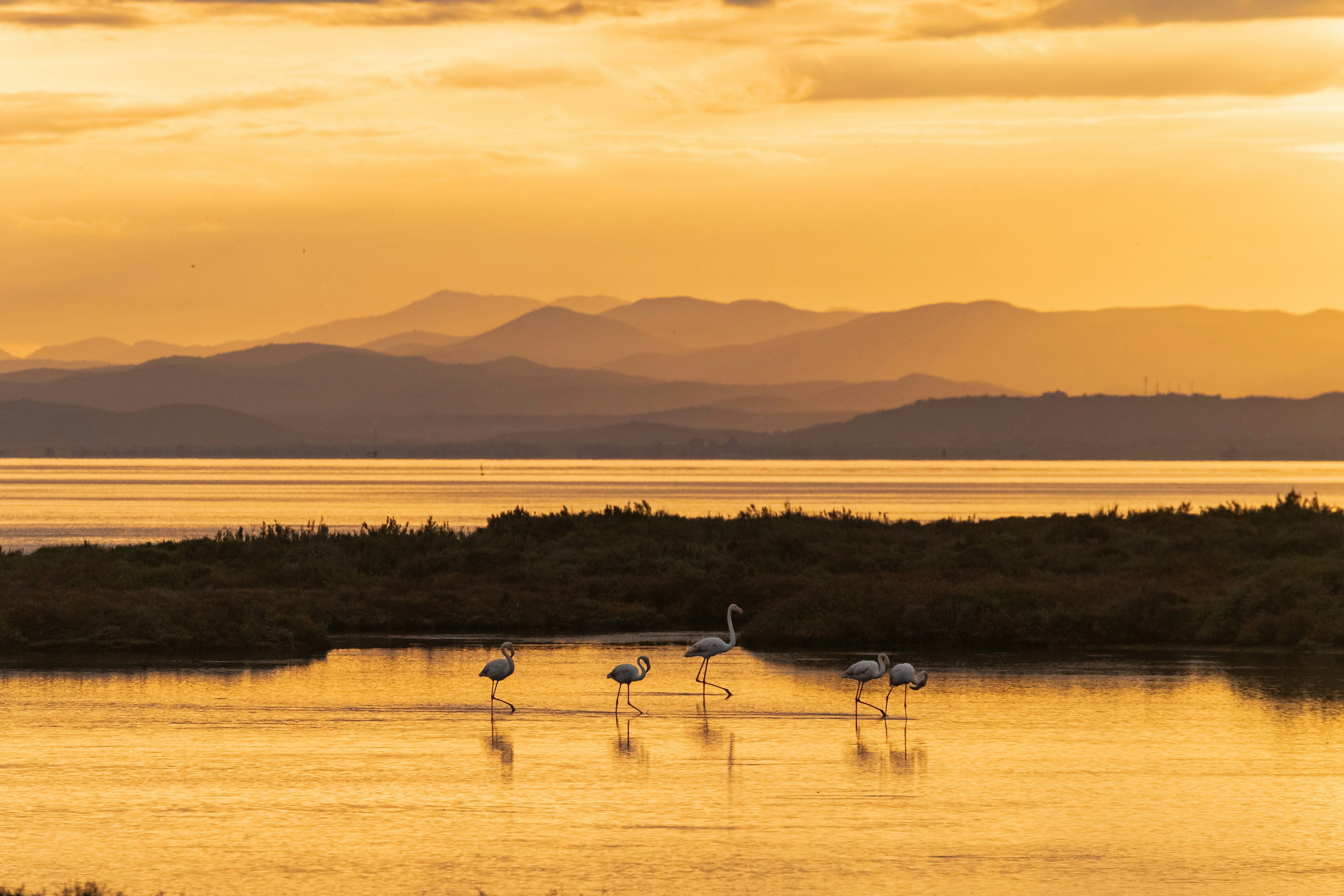
8. Spot flamingos in the ecologically rich wetlands of Delta de l’Ebre
Laced by waterways that melt into the Balearic Sea, the Delta de l’Ebre, a 20km-long bulge of silt-formed land near Catalonia’s southern border, comes as an unexpected highlight of the region.
Flamingos and ibis strut in reed-fringed lagoons, dune-backed beaches are lashed by the wind, and marshes reflect sunsets like mirrors. This is the final flourish of Spain's most voluminous river, which meanders over 900km southeast from Fontibre in Cantabria. Exploring this remote rural landscape – with its whitewashed farmhouses marooned between electric-green rice paddies – lingers in the memory.
Seventy-eight sq kms of this wild, exposed place is the Parc Natural del Delta de l’Ebre, northern Spain’s most important waterbird habitat, with 360 bird species. Migration season (October and November) sees bird populations peak, but birds are also numerous in winter and spring. The park’s flat expanse of waterside trails is ideal for cyclists and ramblers, and watersports abound.

9. Visit celebrated vineyards and bodegas in Penedès Wine Country
Some of Spain’s finest wines come from the Penedès plains west and southwest of Barcelona. Sant Sadurní d’Anoia, 35km west of Barcelona, is the capital of cava, a sparkling, Champagne-style wine popular worldwide and across Spain.
The attractive historical town of Vilafranca del Penedès, 12km further southwest, is the heart of the Penedès Denominació d'Origen (DO; Denomination of Origin) region, which produces noteworthy light whites and some very tasty reds. Visitors are welcome to tour several of the Penedès region’s top wineries, including Codorníu, Freixenet, Jean León and Giró Ribot. The more enthusiastic bodegas will unravel their wine-making history and distinct architecture, show you how cava and/or other wines are made, and finish off with a glass or two.
Planning tip: Tours generally last 1½ hours and advance booking is essential. Most run in Catalan, Spanish or English; other languages may be available on request. If you're intent on serious wine sampling, several companies run tours of the wineries from Barcelona, a safer bet than taking your own wheels.
This article was adapted from Lonely Planet’s Spain guidebook, published in February 2025.









